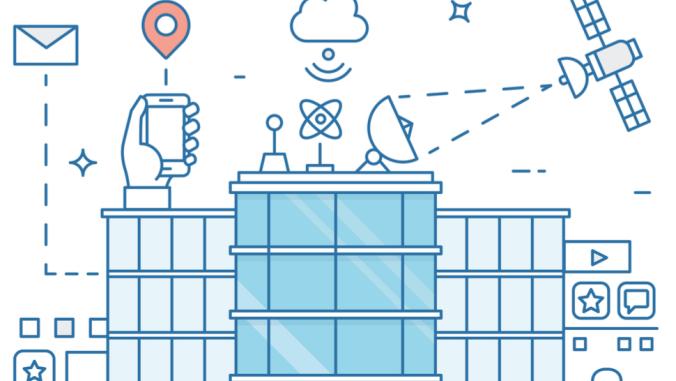
My father says, "Measure twice, cut once." The idea is simple: It is easier, faster, and cheaper to get something right from the beginning than it is to fix it or start over. That concept is as true in his wood shop as it is for businesses launching new products, services or even business models.
Accelerating technologies, climate change and demographic shifts are disrupting traditional business models. While these disruptions likely will elevate the role of the sustainability function at many companies, companies need sustainability to be central to their strategies, so it can drive innovation that meets new markets. Integrating sustainability at the design phase of your products can help you meet new customer expectations and create new business opportunities. If you do not integrate sustainability at product design, your business may find itself paying to repair, recall, reengineer, rebuild and redesign — leading to regret.
We have the opportunity to harness massive advances in technology, from big data analytics to drones and the internet of things, for the public good. Smart cities, traceability and transparency in all transactions, medical diagnostics and access to public services present a huge range of opportunities to realize human rights and drive climate action and community resilience.
Conversely, we also risk unleashing new technologies, capabilities and business models that may violate human rights. Potential issues, such as algorithms that discriminate against vulnerable populations or connected devices that threaten privacy, are increasingly well known, but new and unknown scenarios are almost certain to emerge. Likewise, many of the same technologies that have the opportunity to reduce our environmental impacts arrive with staggering energy requirements that may exacerbate the effects of climate change if not met with renewable energy.
What, exactly, does it look like to align sustainability and design? While this will be different in every industry — and likely in almost every company — it means working with your research and development (R&D) teams, engineers or developers, product innovation gurus, marketing and sales teams, corporate strategists and others who are inventing and defining your future products.
We are increasingly seeing leadership in sustainable design thinking. Automotive manufacturers create electric vehicles that can serve as energy storage solutions. Consumer electronics companies design modular devices for efficient upgrades or repair. Toy makers integrate packaging as a component of their toys, eliminating waste. One of my favorite examples is when breweries use distribution logistics efficiencies and access to renewable energy options to make location-siting decisions.
Unfortunately, many people making these decisions may not even consider efficiencies, let alone broader sustainability opportunities. For example, research by the IEEE found that nearly 66 percent of all software code written is written without efficiency principles in mind. This can lead to bigger problems, such as when a product unwittingly collects personal information from children. The pressure to deliver new products or services to market ahead of competitors or to capture new markets can lead design teams to short-term thinking and narrow focus. Furthermore, the accelerating rate of development and dissemination of new technologies such as AI and blockchain push companies to deploy new concepts faster and faster to avoid losing ground.
One way for you to make sure your business "measures twice, cuts once" is to build governance structures for your product design teams. One great example of what this can look like is a human rights review committee that reviews new product concepts for potential human rights implications, something Intel has created to implement its Global Human Rights Principles (PDF). This type of review can include not only the human rights impacts in the potential product’s application, but also its manufacture, outputs and even its potential misuse. These committees can provide design teams with an access point to sustainability expertise before they invest time and money into concepts that may present unforeseen risks.
This model can be expanded to include climate, circular economy, inclusivity and other sustainability considerations to not only design in a way that mitigates risk, but also to design in a way to maximize opportunities to grow markets through sustainability solutions. Sending new concepts through these review committees can help guide product design teams today, but ultimately, we want to see design take on the sustainability mantle themselves. The committees can create a pathway to building principles and a culture of sustainable product design.
This feedback should go both ways. Companies also may choose to create formal channels to keep the sustainability department informed of the trajectory of new concepts and allow the sustainability team to think through potential product design implications. One way to do this would be to make sure that the R&D team or others have a seat in the corporate sustainability committee. Another option would be to host sustainability-focused hackathons within the company or external competitions to help foster these synergies. Nike’s Circular Innovation Challenge, a global call for makers and solvers to submit innovations to help find new ways to maximize Nike Grind (a palette of recycled and regenerated materials), ongoing through May 1, is one example.
The easiest way for these design teams to see the value in including sustainability from the beginning is to articulate the value proposition clearly. The costs of redesigns, recalls or patches to fix bugs can be crippling to product concepts but hard to measure. Many companies use risk mitigation frameworks in other parts of the business, such as reputation or supply chain, and those frameworks could be applied here. Tracking and reporting internally on the number of patches, upgrades or repairs required over time as sustainability enters the design teams’ everyday thinking can be one way to capture progress.
Another option could be to give the design teams credit for helping customers meet their sustainability goals, or even further, credit for near-misses where incorporating sustainability prevented lost time or other resources.
Incorporating sustainability into product design gives companies a mechanism by which to mitigate risk, reduce costs and seize opportunities for new products and market growth. I had no idea when I was younger that my dad’s woodworking advice would be so relevant to my sustainability career.


